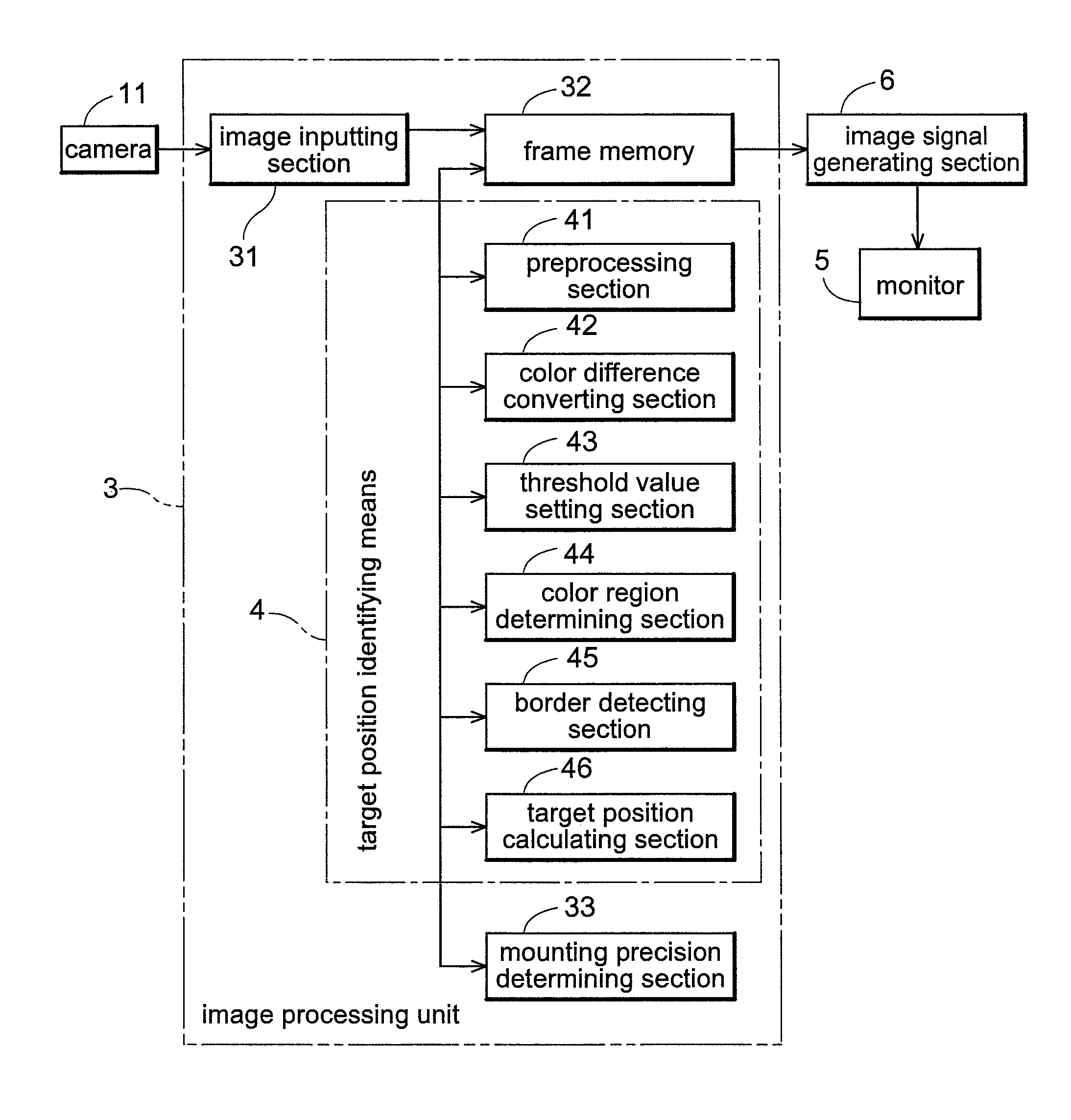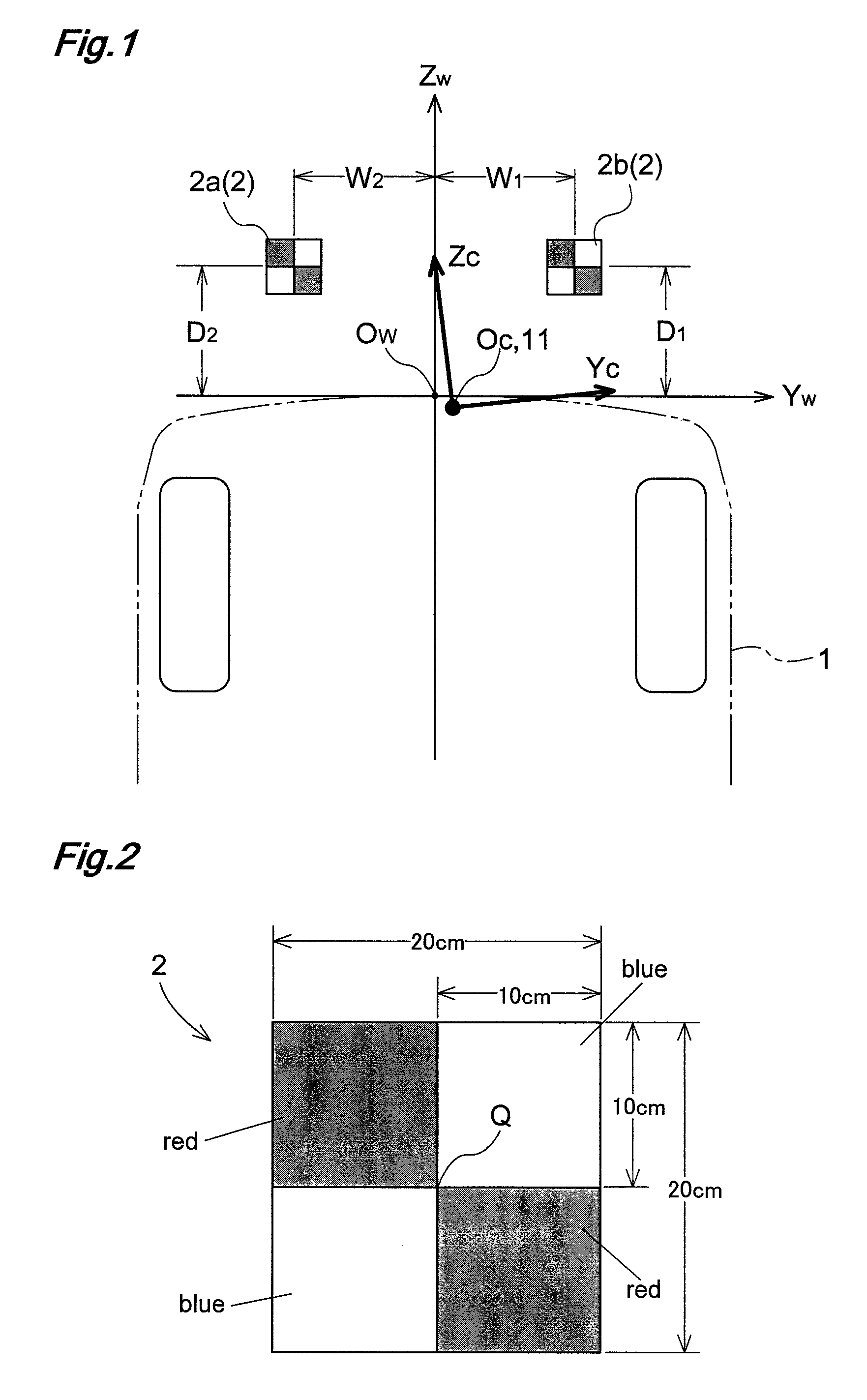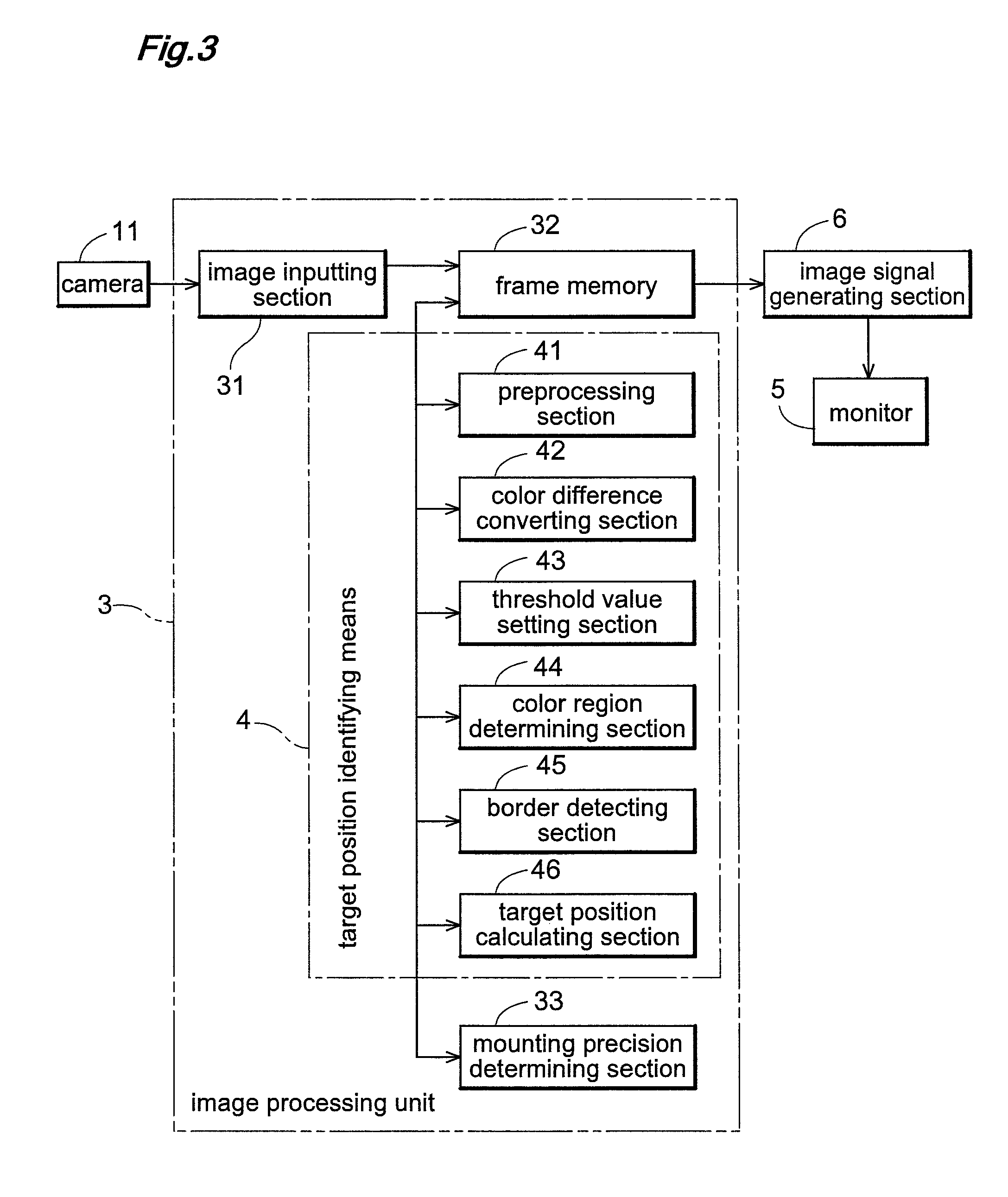Target position identifying apparatus
a technology of positioning identifier and target position, which is applied in the field of positioning identifier, can solve the problems of deterioration in the precision of the maker center point detection, difficult detection of precision target position, and possible erroneous recognition, and achieves the effects of simple edge detection technique, improved detection reliability, and easy detection
- Summary
- Abstract
- Description
- Claims
- Application Information
AI Technical Summary
Benefits of technology
Problems solved by technology
Method used
Image
Examples
Embodiment Construction
[0025]Next, embodiments of the present invention will be explained with reference to the accompanying drawings.
[0026]FIG. 1 is an explanatory diagram showing one example of layout relationship between calibration targets 2 (calibration indices) and a vehicle 1. A camera 11 (vehicle-mounted camera) is mounted upwardly of a rear number plate of the vehicle 1 with an amount of lateral offset relative to the longitudinal axis of the vehicle body and with an optical axis of the camera being oriented downwards (e.g. 30 degrees downward relative to the horizontal). Meanwhile, in this embodiment, the longitudinal axis of the vehicle body and the optical axis of the camera are not parallel with each other. The camera 11 is a wide-angle camera having a horizontal view angle of from 110 to 120° C. and is capable of capturing an image of an area extending about 8 meters rearward. This camera 11 is calibrated for absorbing mounting error or tolerance when it is mounted on the vehicle 1 in e.g. a...
PUM
 Login to View More
Login to View More Abstract
Description
Claims
Application Information
 Login to View More
Login to View More - R&D
- Intellectual Property
- Life Sciences
- Materials
- Tech Scout
- Unparalleled Data Quality
- Higher Quality Content
- 60% Fewer Hallucinations
Browse by: Latest US Patents, China's latest patents, Technical Efficacy Thesaurus, Application Domain, Technology Topic, Popular Technical Reports.
© 2025 PatSnap. All rights reserved.Legal|Privacy policy|Modern Slavery Act Transparency Statement|Sitemap|About US| Contact US: help@patsnap.com



